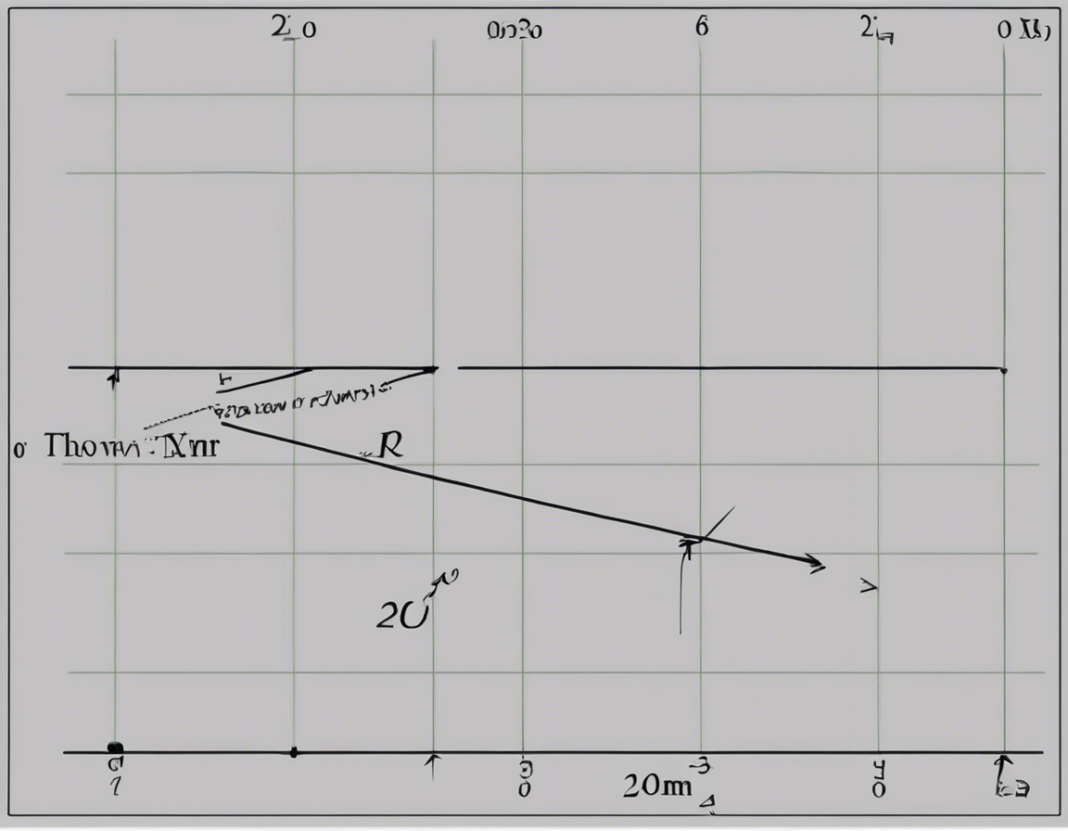When discussing the velocity of 20 m/s in the context of a ball thrown vertically downwards, there are various factors to consider that contribute to the overall motion of the object. Understanding the physics behind this scenario can help clarify the behavior of the ball and how its velocity evolves over time.
Understanding the Initial Velocity and Acceleration Due to Gravity
When a ball is thrown vertically downwards with an initial velocity of 20 m/s, it implies that the ball is moving in the negative y-direction. This initial velocity can be considered the starting point for the motion of the ball.
- The acceleration experienced by the ball in this scenario is due to gravity and is always directed downward, towards the center of the Earth. The acceleration due to gravity is approximately 9.81 m/s^2, and it impacts the velocity of the ball as it moves downwards.
Impact of Gravity on Velocity
As the ball moves downward under the influence of gravity, its velocity will change. In this case, the initial velocity of 20 m/s will gradually decrease as the ball accelerates towards the ground. The acceleration due to gravity causes the ball to speed up in the downward direction, increasing its velocity.
- The velocity of the ball will continue to change until it reaches its maximum velocity, known as the terminal velocity. This is the point at which the force of gravity is balanced by the force of air resistance, resulting in a constant velocity.
Equations of Motion for Vertical Motion
In the context of vertical motion under gravity, several key equations can help calculate various parameters of the ball’s trajectory. These equations are derived from the principles of kinematics and dynamics and are crucial for understanding the behavior of objects in free fall.
Key Equations:
-
Velocity-Time Relationship:
- The velocity of an object can be calculated over time using the equation:
[ v_f = v_i + at ]
Where:- ( v_f ) = final velocity
- ( v_i ) = initial velocity
- ( a ) = acceleration
- ( t ) = time
- The velocity of an object can be calculated over time using the equation:
-
Displacement-Time Relationship:
- The displacement of an object can be calculated over time using the equation:
[ s = v_i t + \frac{1}{2}at^2 ]
Where:- ( s ) = displacement
- ( v_i ) = initial velocity
- ( a ) = acceleration
- ( t ) = time
- The displacement of an object can be calculated over time using the equation:
-
Final Velocity Calculation:
- The final velocity of an object after a certain time can be calculated using the equation:
[ v_f^2 = v_i^2 + 2as ]
Where:- ( v_f ) = final velocity
- ( v_i ) = initial velocity
- ( a ) = acceleration
- ( s ) = displacement
- The final velocity of an object after a certain time can be calculated using the equation:
Terminal Velocity and Air Resistance
As the ball continues its downward motion, it may eventually reach terminal velocity. Terminal velocity is a constant speed that a freely falling object eventually reaches when the resistance of the medium through which it is falling (such as air) prevents further acceleration.
- When a falling object such as a ball reaches terminal velocity, the net force acting on it becomes zero, as the force due to gravity is balanced by the force of air resistance. This results in a constant velocity that the object maintains until it reaches the ground.
Impact of Initial Velocity on the Ball’s Trajectory
The initial velocity of 20 m/s plays a significant role in determining the behavior of the ball as it moves vertically downwards. A higher initial velocity will result in the ball reaching the ground faster, compared to a lower initial velocity.
- In the case of an initial velocity of 20 m/s, the ball will accelerate quickly towards the ground due to the combined effect of gravity and the initial velocity. This acceleration causes the velocity of the ball to increase in the downward direction until it reaches terminal velocity or impacts the ground, depending on the height from which it was thrown.
Effects of Air Resistance and Object Characteristics
It is important to note that air resistance can influence the motion of the ball as it falls. In real-world scenarios, objects experience air resistance, which affects their acceleration and velocity.
-
Factors such as the shape, size, and surface area of the object can impact the amount of air resistance it encounters. Objects with a larger surface area experience greater air resistance, which can slow down their descent compared to more aerodynamic objects.
-
The presence of air resistance can alter the trajectory of the ball and affect the calculations based on idealized scenarios without air resistance. When considering the velocity of a ball thrown vertically downwards, it is essential to account for the potential effects of air resistance on its motion.
Frequently Asked Questions (FAQs)
Q1: What is the significance of the initial velocity in vertical motion?
A: The initial velocity determines the starting point and direction of motion in vertical scenarios. A higher initial velocity leads to faster acceleration towards the ground, impacting the overall trajectory of the object.
Q2: How does air resistance influence the velocity of a falling object?
A: Air resistance acts in the opposite direction to the motion of the object, slowing it down as it falls. The presence of air resistance can affect the acceleration and terminal velocity of the object.
Q3: What role does gravity play in the velocity of a ball thrown vertically downwards?
A: Gravity acts as the primary force causing the acceleration of the ball in the downward direction. It increases the velocity of the ball as it falls towards the ground.
Q4: What is terminal velocity, and how does it relate to the velocity of a falling object?
A: Terminal velocity is the constant speed that a falling object eventually reaches when the forces of gravity and air resistance are balanced. Once terminal velocity is reached, the object no longer accelerates and maintains a constant velocity.
Q5: How do the equations of motion help in calculating the velocity and displacement of a falling object?
A: The equations of motion, derived from kinematics and dynamics principles, provide a mathematical framework to calculate key parameters such as velocity, displacement, acceleration, and time for objects in motion, including those in free fall.
In conclusion, the velocity of 20 m/s in the context of a ball thrown vertically downwards involves a dynamic interplay of forces such as gravity, air resistance, and initial conditions. Understanding the impact of these factors on the motion of the ball is essential for analyzing its trajectory and behavior as it falls towards the ground. By considering the fundamental principles of physics and utilizing relevant equations, one can gain insights into the complexities of vertical motion and the evolution of velocity in such scenarios.

